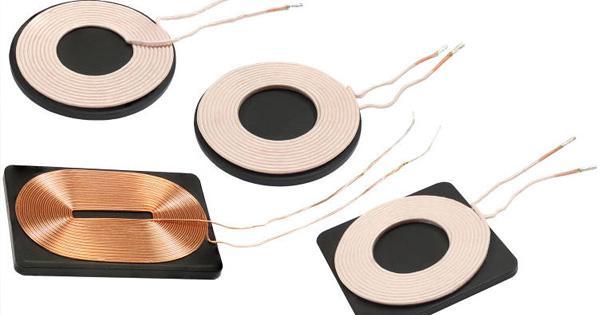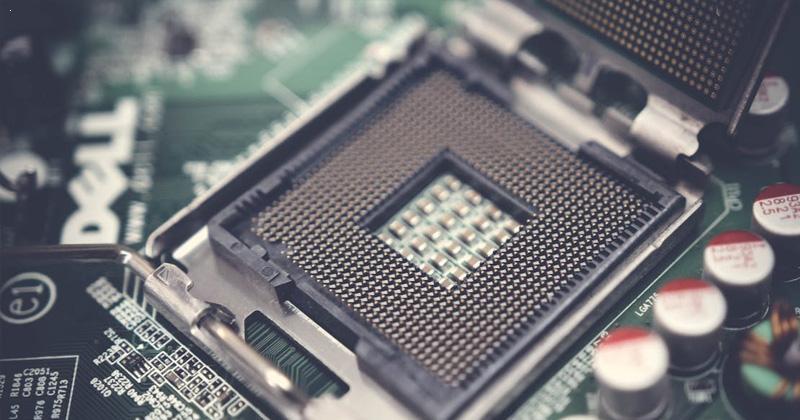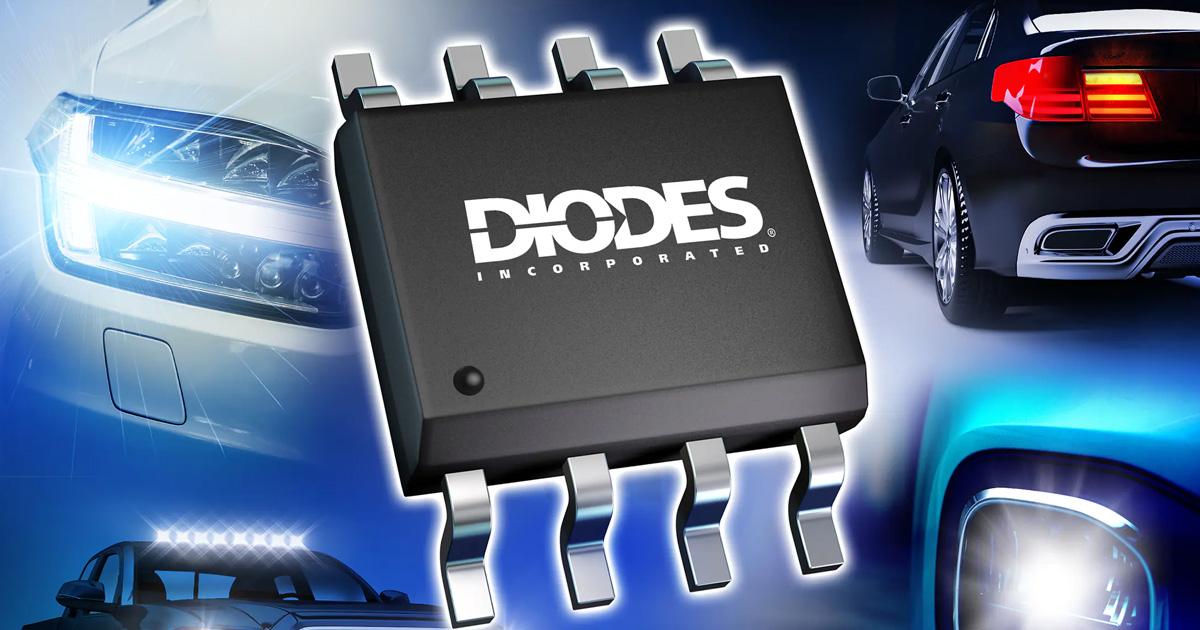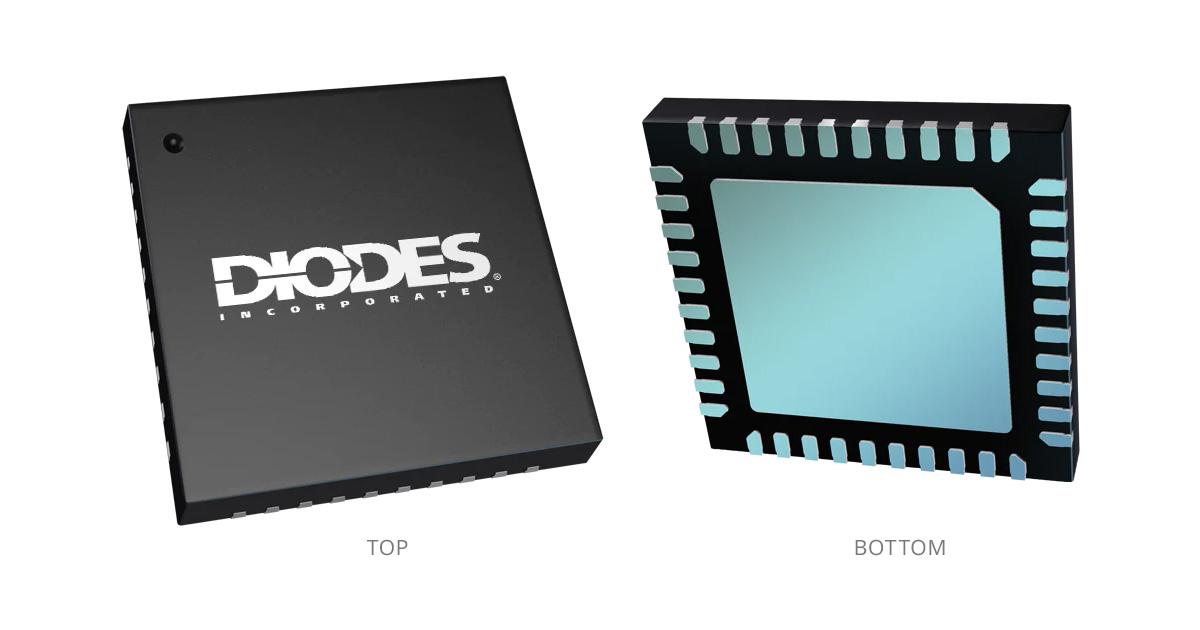
How to Utilize SMT Adapter Modules for Advanced IC Package Transitioning
For decades, semiconductor manufacturers have developed integrated circuits (ICs) as surface-mount device (SMD) packages. The most common surface-mount technology (SMT) package types for DC-DC converters, op amps, and many other circuits include small-outline integrated circuit (SOIC), thin-shrink small outline package (TSSOP) and small-outline transistor (SOT).
Newer processes and manufacturing technologies such as 300mm wafers have enabled higher-performing devices with more parts per wafer. These advances have led to the production of ICs at higher volumes than legacy ICs.
Along with increased volumes, Texas Instruments (TI) manufactures and assembles many newer devices at multiple sites, which is known as “dual sourced.” Dual-source manufacturing and assembly make it easier to move existing system designs to newer devices, since there’s more throughput, flexibility and reliability in the supply chain.
Performance and Longevity
Perhaps the most straightforward method for increasing the longevity of a product is to increase its performance by updating the ICs with newer, better-performing devices. This method helps accelerate the development cycle at the design and verification level because the designer already knows that the majority of the system works and will make relatively minor changes, thus simplifying the product’s recharacterization or recertification.
Or you might be motivated to move to a new device generation because of improved performance. In 2004, TI released the LMC7211-N push-pull output comparator. But with the recent release of the company’s TLV1811 comparator, it is possible to improve overall system performance by evaluating the newer device in place.
For example, the TLV1811 has improved specifications that make it a potential replacement for the LMC7211-N. The TLV1811 employs a more advanced IC process and has a rail-to-rail input/output, a 40 V supply range and a lower offset voltage. Its operating temperature range extends to 125°C, as opposed to 85°C for the LMV7211-N.
Saving Time and Cost
In applications where there’s a limited amount of board space, cost sensitivity or both, it might be necessary to transition to a smaller and more economical device throughout a system’s lifetime. An example of this would be transitioning from the OPA171 operational amplifier in an SOIC package to the OPA991 operational amplifier in the SC-70 package. As Figure 1 shows, the SC-70 body size is more than six times smaller than the SOIC, resulting in instant space savings.
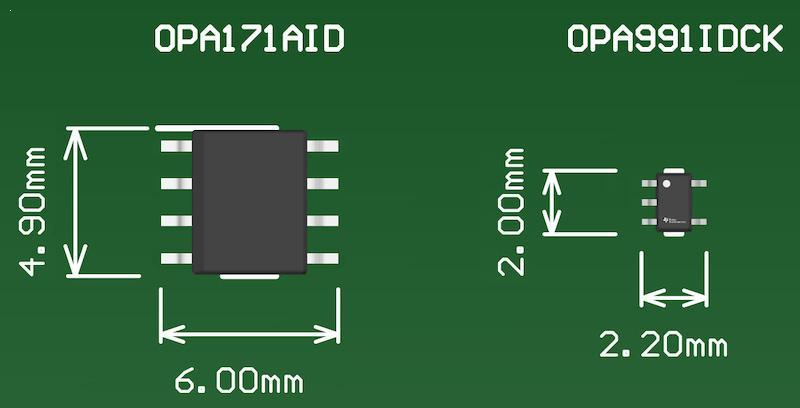
Figure 1. OPA171 SOIC package vs. the OPA991 SC-70 package
Newer manufacturing capabilities and process improvements have enabled drastic die-size reductions of semiconductor devices that enable manufacturers to offer them in smaller packages previously unavailable.
Transitioning to Newer Packages Without a Redesign
Whether the reason to move to a different device is to take advantage of an updated process technology, performance, size or cost, one common obstacle when updating devices is the lack of drop-in replacements. For operational amplifiers, for example, this challenge arises in packages with additional pins for shutdown, such as a 16-pin SOIC package and a 16-pin TSSOP.
For example, the TI TLV2775 is a quad-channel operational amplifier with shutdown functionality available in both 16-pin SOIC and TSSOP. While newer devices continue to support the no-shutdown 14-pin SOIC and TSSOP, they rarely offer the shutdown variants in SOIC and TSSOP, which makes it harder for engineers to move to newer devices.
TI’s TLV9054S is a great choice for an upgrade. However, this quad-channel shutdown operational amplifier is only available in the very thin quad flat no-lead (16-pin WQFN) package.
Three Difficult Options
Until recently, if you wanted to replace the TLV2775 with the TLV9054S, you had three options:
- Option #1: Spin a new board to evaluate a part that you haven’t tested yet.
- Option #2: Build a simplified circuit on an evaluation module to evaluate.
- Option #3: “Dead bug” or “blue wire”-solder your device to your board.
TI’s surface-mount adapter evaluation modules (EVMs) offer an alternative for designers. These adapter EVMs provide savings in both engineering time and cost by enabling the evaluation of a replacement device in a system. Option #1, listed above, is expensive and time-consuming, option #2 may not give you a complete picture of device performance, and option #3 introduces parasitic losses and can be almost impossible with smaller devices.
As Figure 2 shows, the surface-mount adapter EVM goes directly on the existing printed circuit board and adapts the 16-pin SOIC to the 16-pin WQFN device under evaluation. The surface-mount adapter EVMs provide a distinct advantage to evaluating another device by minimizing resources spent to evaluate that the device will work in your product before transitioning over.
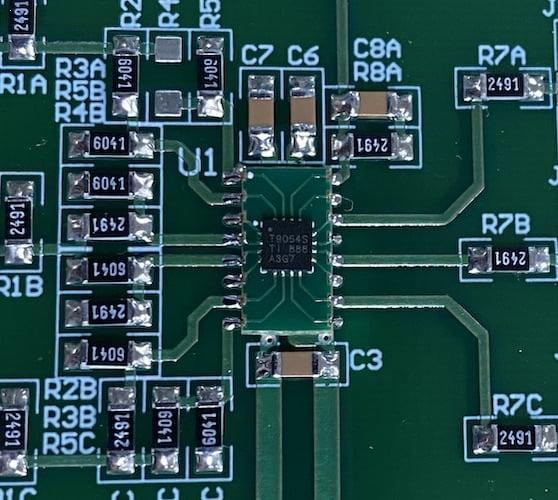
Figure 2. Converting the 16-pin SOIC to a WQFN package
Like the 16-pin SOIC package and 16-pin TSSOP, single-channel SOIC packages in older devices such as the LMC7211-N and OPA171 are not available in the next-generation versions of these devices (the TLV1811 and OPA991, respectively). There are many newer packages not available in previous-generation devices that provide a very compact solution, but wouldn’t be easy to evaluate simply.
Four Surface-Mount Adapter EVM Choices
New surface-mount adapter EVMs are available in four package variations:
- The eight-pin SOIC adapter EVM (Figure 3)
- The eight-pin very thin shrink small-outline package (VSSOP) and TSSOP adapter EVM (Figure 4)
- The quad (14-/16-pin) TSSOP adapter EVM (Figure 5)
- The quad (14-/16-pin) SOIC adapter EVM (Figure 6)
TI designed each variation to convert footprints of larger legacy packages into their next-generation successors.
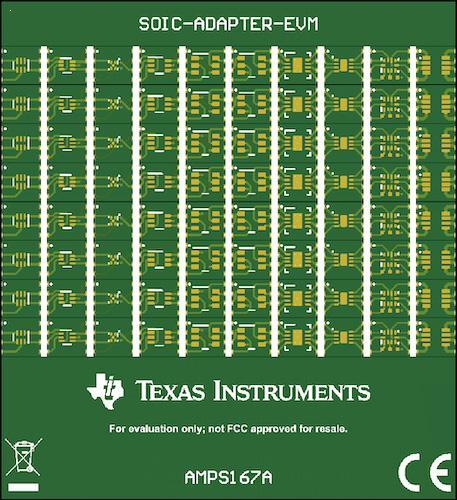
Figure 3. SOIC adapter EVM
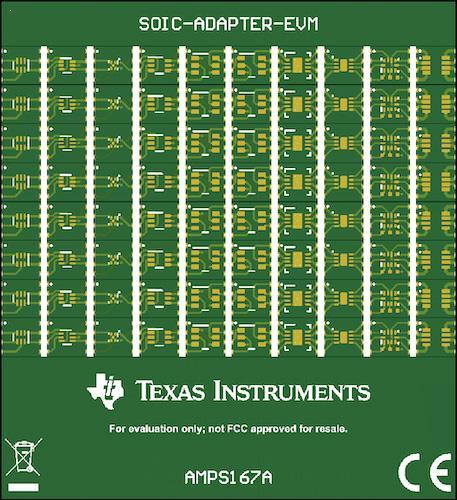
Figure 4. VSSOP TSSOP adapter EVM
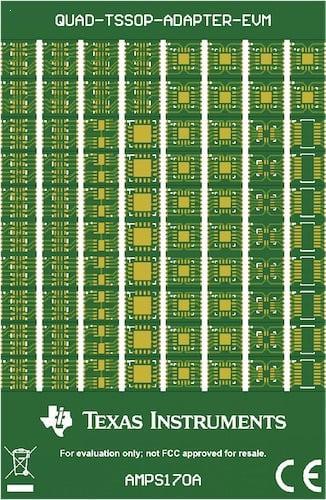
Figure 5. Quad TSSOP adapter EVM
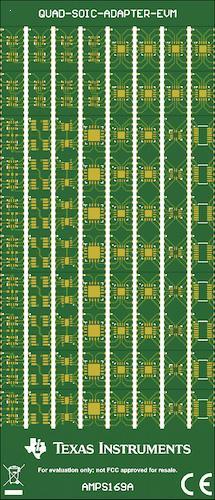
Figure 6. Quad SOIC adapter EVM. (Click image to enlarge)
Ease Your Engineering Efforts
Updating and upgrading devices used to be a daunting challenge. Previous methods of either spinning a new board before testing the new device, building out a simplified circuit on an EVM, or blue wiring the device all come at the expense of time and money. Surface-mount adapter EVMs can help you minimize engineering effort and save costs by giving you the option to evaluate new devices in existing designs.
If interested in learning how to use and ordering one or more of these surface mount adapter boards in your system, they can be ordered from TI’s Surface Mount Adapter EVM page.
All images used courtesy of Texas Instruments (TI)
Industry Articles are a form of content that allows industry partners to share useful news, messages, and technology with All About Circuits readers in a way editorial content is not well suited to. All Industry Articles are subject to strict editorial guidelines with the intention of offering readers useful news, technical expertise, or stories. The viewpoints and opinions expressed in Industry Articles are those of the partner and not necessarily those of All About Circuits or its writers.


